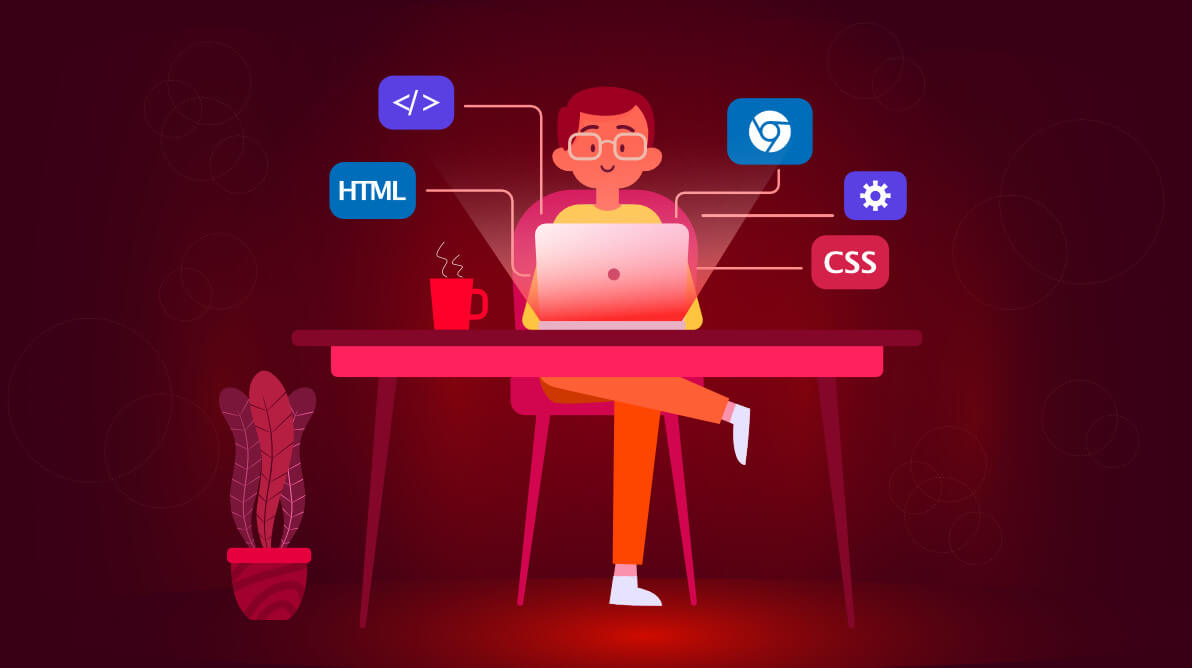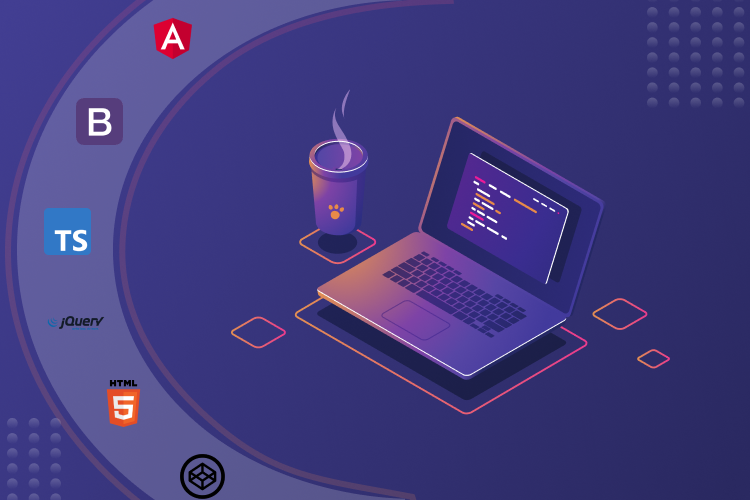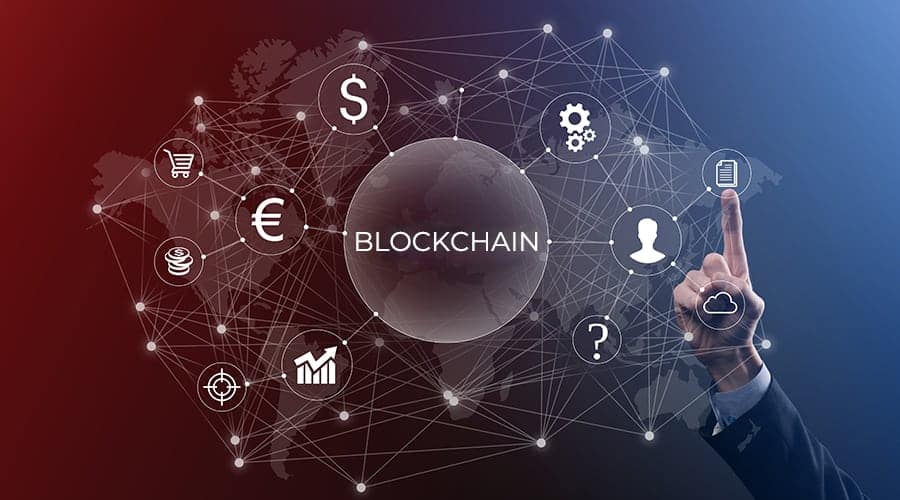Back-End vs Front-End Development: What’s the Difference?
“Front-end” and “back-end” are two common buzzwords discussing application development. Since front-end developers need distinct skill sets than back-end developers, they split the job of an app developer into two. We examined both Back-end vs Front-end development to understand better how they differ from one another and how they function together to shed light on app development.
So, let’s discuss the differences between these two names, the origins of their existence, and the various career options that are available in the field of software development.
I. What is Front-end and Back-end Development?
Websites comprise two main components: the user interface, which the user interacts with, and the user interface, which is the unseen framework that supports the user interface. Understanding how Front-end and Back-end Development differ can be challenging, given how similar they are in ensuring that websites run correctly.
Colors, layout, and fonts are just a few examples of the visual elements Front-end Developers create for visitors to engage with on a website. Back-end Specialists build the invisible framework that keeps websites running correctly. Back-end Developers are paid more than Front-end Developers and have different technical skill sets.
1. What is front end development?
Front-end Developers create with the end user in mind. The area of computer programming known as “Front-end Development” is focused on the coding and creation of user-visible website elements and functions. It is focused on ensuring that the aesthetically pleasing aspects of a website are both functional.

Consider the front end to be the “client-side” of an application. Assume you’re a front-end developer. This means that your job is to code and create the graphic elements of a website. You’d be more concerned about what someone sees when they visit a website or use an app. You should also ensure the site is easy to use and functions smoothly.
These developers bring the visual designs from UX and UI designers to life, providing the website performs appropriately for the user. One of the many ways you may use Front-end skills is to construct a static website, which is a website with predefined content that is presented to a user’s browser exactly as it is stored. If a tiny business website or a straightforward landing page doesn’t let users take any interactive actions, it can be a static website.
2. What is back-end development?
The portion of a website visitors cannot view is the subject of Back-end Development. It is what gives a website its interactivity. The “server-side” of a website is another term for the back end. Let’s imagine, for illustration, that you manage a social networking website.

All user data you collect must be kept in an easily accessible location. A database is a type of storage facility, and some popular ones are Oracle, SQL Server, and MySQL. A server, which is crucially a remote computer, manages databases. A Back-end Developer will oversee this database and the website’s stored content.
As users view uploaded content and other user profiles, Front-end aspects of your social network website can continue to operate as intended. Users will indirectly connect with things these developers work on through a Front-end application, even though they do not directly interact with the back end of a website. Back-end Development is concerned with organizing and storing data while ensuring the front end works correctly.
II. What is The Difference between Front-end and Back-end?

Both Front-end vs Back-end Development are essential to creating a complete web application development. Combining the presentation layer (front-end) with the underlying functionality, data processing, and infrastructure (back-end), they cooperate to deliver a seamless user experience. The main variations are broken out as follows:
| Front-end | Back-end | |
| Focus | It focuses on a website or application’s user interface (UI) and user experience (UX); front-end developers design and implement the visual elements that people interact with directly in their browsers. |
Attention is given to an application’s server side. Back-end developers take care of the business logic, server infrastructure, data processing, storage, and retrieval operations necessary to support the application. |
| Technologies | It uses scripting languages, including HTML, CSS, and JavaScript. Web pages’ structure and content are provided by HTML, their presentation and styling are handled by CSS, and JavaScript adds their interactivity and behavior. |
Utilizes a range of computer languages, including Java, Python, Ruby, PHP, or JavaScript (with frameworks like Node.js). The creation of server-side logic, handling of data storage and retrieval from databases, and administration of the entire application flow are all made possible by these languages for back-end developers. |
| User Interaction |
Mainly focused on creating visual components that people interact with and can see in their web browsers. This includes creating layouts, menus, buttons, forms, animations, and other interactive elements. |
It focuses on the behind-the-scenes processing required to support user interactions. Back-end developers handle duties such as data validation, authentication, server-side form processing, and connectivity with external systems or APIs. |
| Responsibilities |
Tooling aims to translate design and user experience requirements into code, optimize user interface performance and responsiveness, and ensure cross-browser compatibility. |
This includes designing and executing server-side architecture, creating APIs and web services, managing databases, implementing security measures, and improving application speed and scalability. |
FAQs
What is The Relationship between Front-tend and Back-end?
In the process of developing web applications, Front-end vs Back-end Development work together and depend on one another. They cooperate to guarantee flawless functionality and user experience.
- Collaboration: To satisfy project requirements, Front-end and Back-end Developers work closely together, communicating and coordinating their efforts.
- Data Flow: The Back-end handles requests and delivers data back to the front end for presentation, whereas the front end depends on the back end for data and functionality.
- User Experience: While Back-end Development supports Front-end Development with business logic and data processing, Front-end Development concentrates on the visual interface and user experience.
- Separation of Concerns: Front-end focuses on presentation, while Back-end handles data processing and server infrastructure.
- Code Integration: Front-end and back-end code are integrated to ensure smooth functionality and cooperation between the two layers.
- Iterative Development: Both Front-end vs Back-end Development occur simultaneously and iteratively, with updates and changes made in one layer affecting the other.
How do Front-tend and Back-end Work Together?
Although the two sides of web development share similarities, it’s simpler to conceive of them as the two sides of a cassette tape. They are both essential components of web development for making functional, aesthetically pleasing websites and applications.
Therefore, you might think about becoming a full-stack developer if you’re thinking about a career in web development but aren’t sure which side of the development cassette, you’re interested in jamming to the best of both worlds is experienced by full-stack engineers whose work combines Front and Back-end components. It is comparable to getting to listen to the entire cassette every day.





